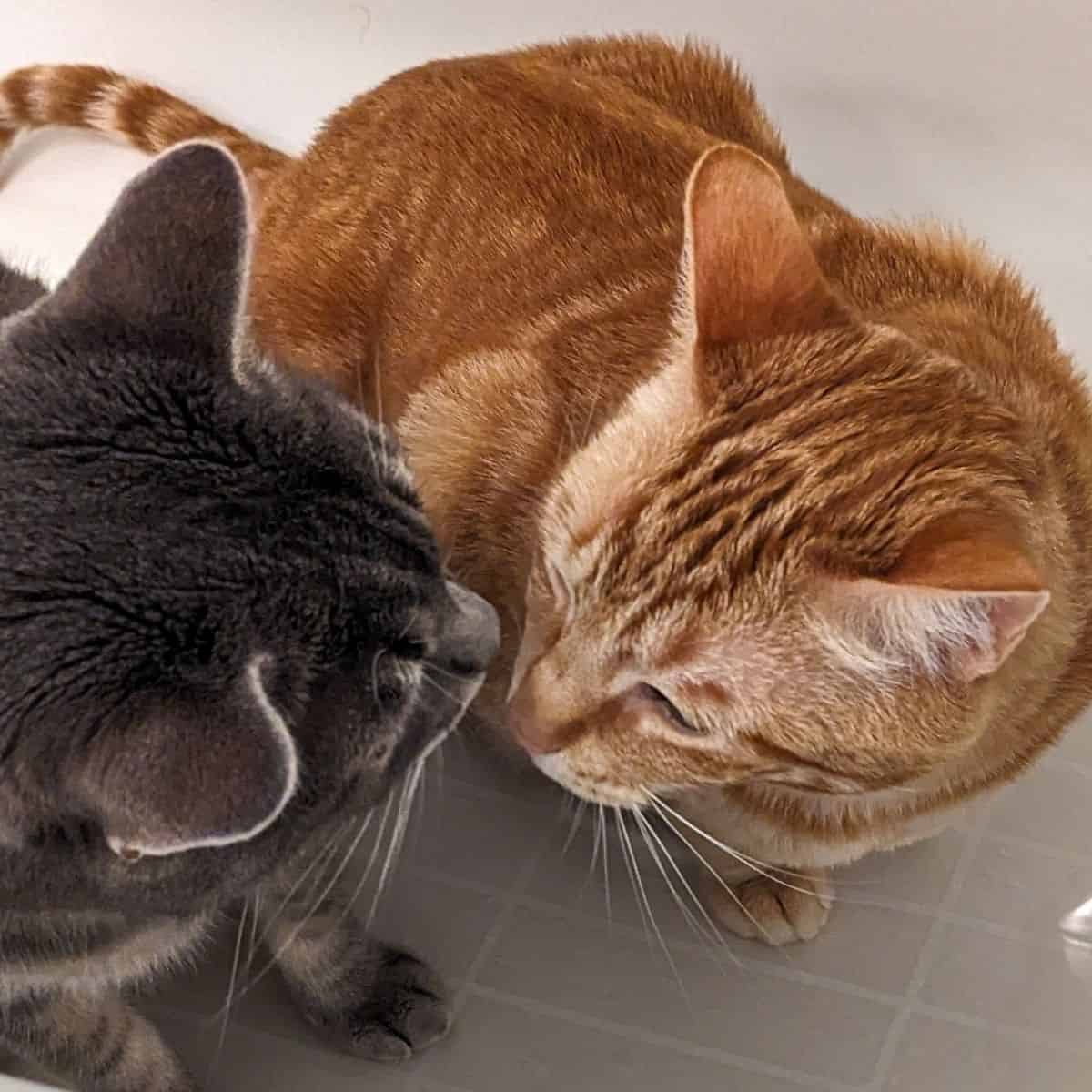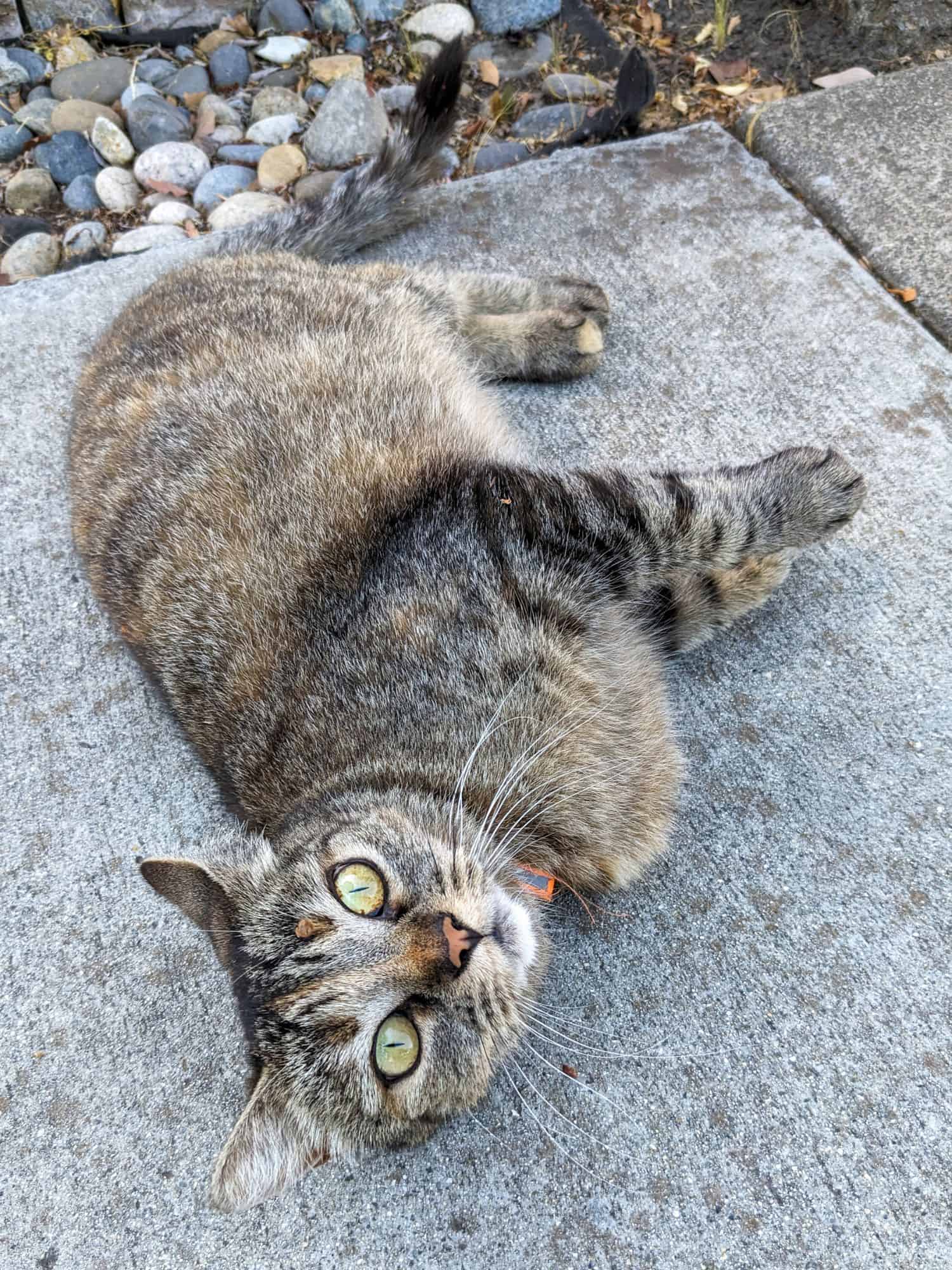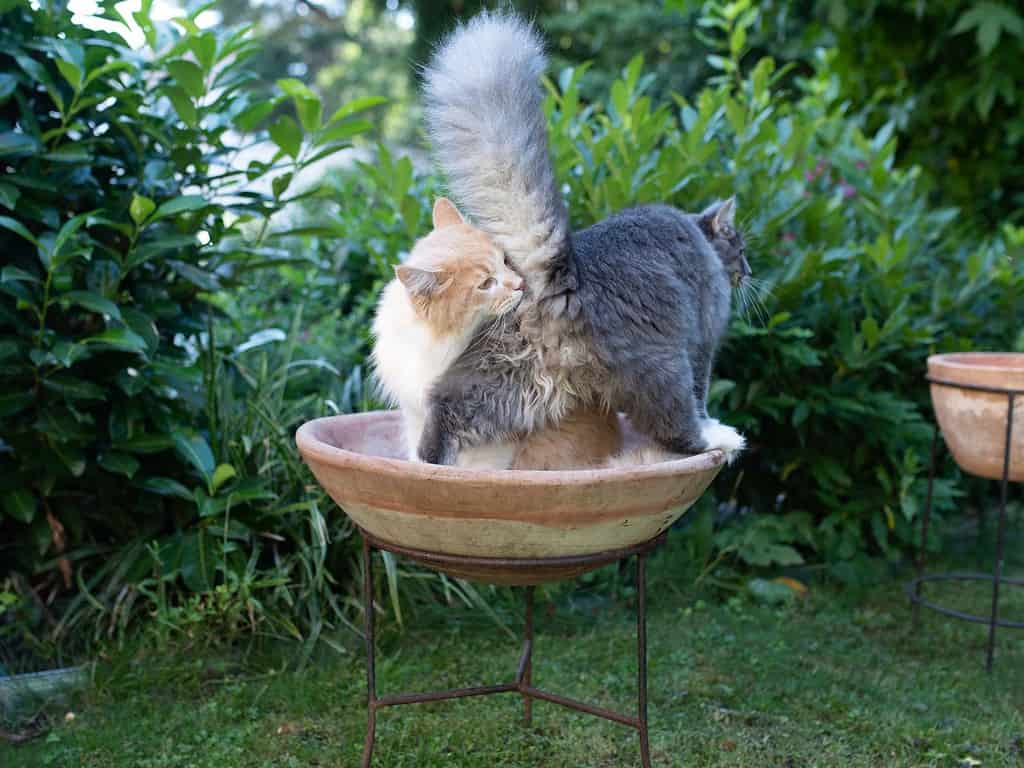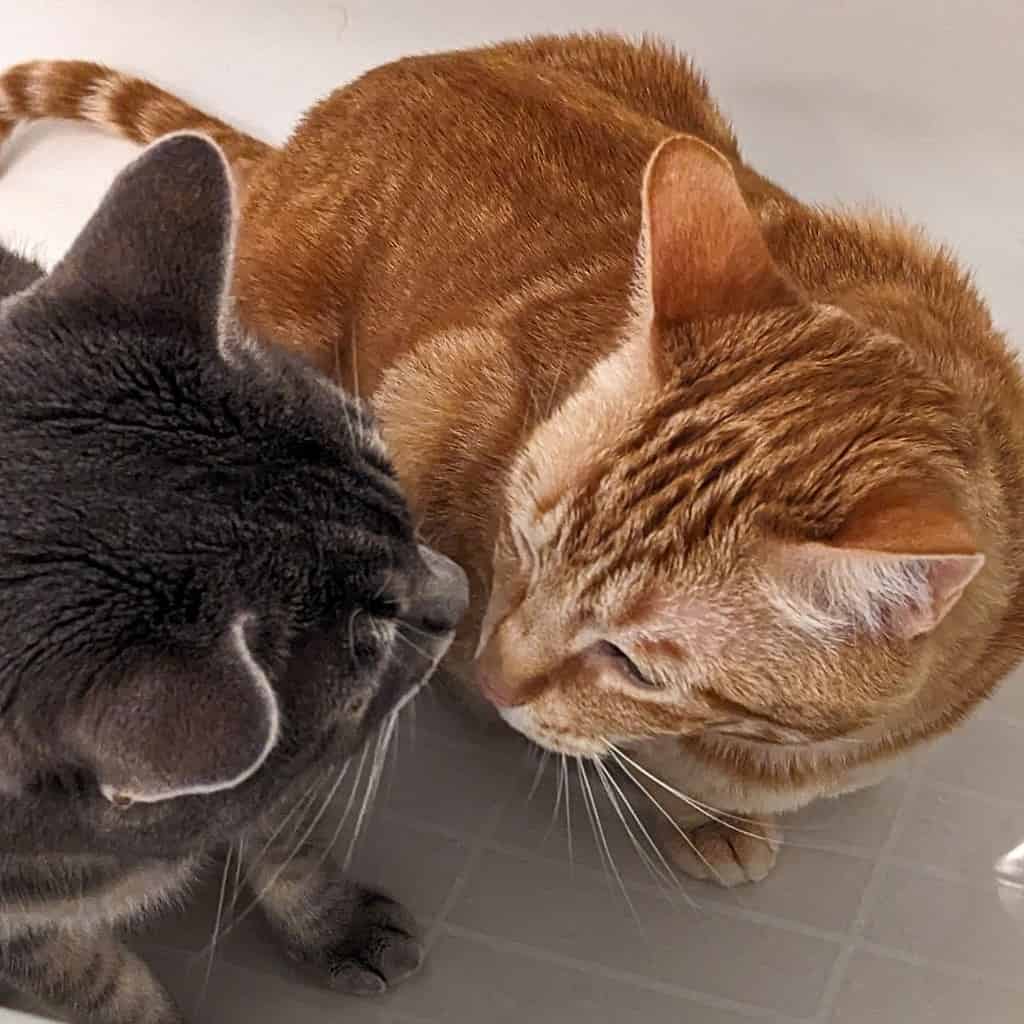One of the more curious and less appetizing behaviors (at least to humans) of cats is their habit of sniffing the behinds of other cats. Cats have a very wide range of ways that they communicate, including vocalizations, facial expressions, tail posture, pheromones, and scent.
The cat’s heightened sense of smell, like most predators, helps the cat to find prey, decide if food is safe to eat, and learn who has been in their territory. Cats also use their olfactory senses to find mates – a male cat can tell if a female cat is in heat through her scent.
With 80 million smell receptors, the cat’s ability to glean information through scents is far greater than humans who only have five million smell receptors. It’s why, when you come back home, your cat will carefully sniff your hands, face, and clothes to learn about where you have been and what other animals you may have encountered.

Cats use scents to communicate
Cats in return, produce scents of their own that they use to communicate their presence with other cats. A cat’s body is covered in scent glands which can be found in many places on their body including their cheeks, above their eyes, along their flanks, their anus, and the base of their tail. Cats even have scent glands between the pads of their paws.

Cats also use other smells coming from their saliva, feces, and urine to communicate. The scents produced from all of these sources are formed by a mixture of volatile organic compounds such as aldehydes, alcohols, esters and ketones. Most humans can’t smell these scents, but the cat’s powerful smelling ability can.
When the cat rubs the parts of their body along people, cats, or objects, they leave behind their scent. It’s partly why your cat likes to scratch things as the scent glands in the paws leave behind a trail of information about them. It’s also why your cat will rub their cheeks, back legs, and head bunt you – it’s their way of marking you as being part of their family group. It’s also, unfortunately, plays a part in why some cats will spray parts of the house with their urine.

The language of the cat’s behind
The anus, or behind, of the cat is one area that is particularly rich in scent production used to communicate information about the age, sex, or health status of the feline. If you have ever seen a cat really bury their nose in the behind of another cat, it’s because they are learning information about that cat. For example, when one of my cats returned from a hospital stay, one of my other cats aggressively sniffed her behind to figure out where she had been.
A team of researchers from University of California at Davis have published a study in Scientific Reports that looked at the role of microbiomes (bacteria) and chemical compounds in the anal gland secretions of domestic cats. For this study, the researchers wanted to understand how these bacteria and chemicals might contribute to the cats’ communication.

The study involved analyzing the bacteria and chemical compounds present in the anal glands of 23 domestic cats. Metagenomic sequencing and mass spectrometry to analyze the bacteria (microbiome) and chemicals (metabolome) in the gland secretions. Common bacteria that the study found in cats was Corynebacterium, Bacteroides, Proteus, Lactobacillus, Streptococcus, and Peptoniphilus. The profiles produced were then matched with the background information about each cat including the cats’ age, diet, and living environment.
What the researchers discovered is that the profile of these cats does change somewhat depending on these factors. Researchers found that older cats in the study tended to have a different microbiome makeup than younger cats. Obese cats also appeared to have a different bacterial profile although the study authors noted that the sample size of these cats was too small to be statistically significant. The study also found that the bacterial profile of outdoor cats was not the same as indoor cats.
The study concluded that a moderate correlation (r = 0.17) was observed between the types of bacteria present and the chemicals produced. The researchers felt a wider study of cats was needed to further explore the relationship of microbiomes in cats and their anal scents. The current study of 23 cats was too small to determine with statistical confidence the association between a cat’s age, health, and environment with their anal scents.
The study:
Rojas, C. A., Marks, S. L., Borras, E., Lesea, H., McCartney, M. M., Coil, D. A., … & Eisen, J. A. (2023). Characterization of the microbiome and volatile compounds in anal gland secretions from domestic cats (Felis catus) using metagenomics and metabolomics. Scientific Reports, 13(1), 19382. https://doi.org/10.1038/s41598-023-45997-1







